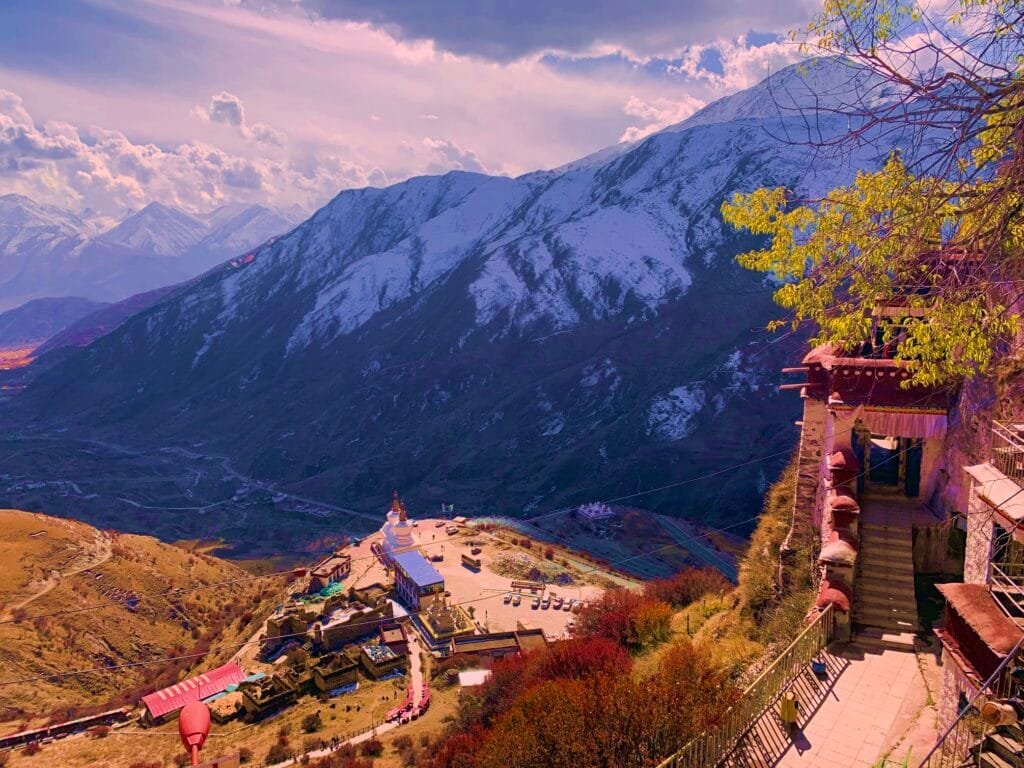Embark on a journey to Tibet’s serene sanctuaries, Drak Yerpa and Shar Temple, where spirituality meets natural beauty. Just a short drive from Lhasa, these sacred sites offer a glimpse into Tibet’s rich heritage and peaceful atmosphere. Explore the ancient meditation caves of Drak Yerpa, perched high in the mountains, and marvel at the 108 white pagodas scattered across Shar Temple’s tranquil grounds. This one-day tour promises stunning landscapes, spiritual reflection, and an escape from the city’s hustle. Ideal for first-time visitors or those seeking a slower pace, it’s a perfect way to immerse yourself in Tibet’s timeless serenity.
This one-day tour combines three spiritual landmarks near Lhasa, ideal for first-time visitors seeking a serene and unhurried experience:
| Time | Activity | Duration |
|---|---|---|
| 8:00 AM | Depart from Lhasa | 40 minutes drive |
| 8:40 AM | Arrive at Ngachen Mountain for a scenic stop | 40 minutes |
| 9:20 AM – 12:30 PM | Explore Drak Yerpa Temple and its meditation caves | 3 hours |
| 12:30 PM – 2:00 PM | Travel to Shar Temple | 1 hours drive |
| 2:00 PM – 4:00 PM | Enjoy the peaceful Shar Temple | 2 hour |
| 4:00 PM – 5:00 PM | Return to Lhasa | 1 hours drive |
Drak Yerpa Temple, perched in the serene Yerpa Valley in northern Tibet, stands as a testament to Tibet’s spiritual heritage. Renowned as one of the most significant Buddhist sites, this temple is an unmissable destination for those seeking tranquility, history, and breathtaking views.
Dating back to the 7th century, Drak Yerpa Temple has been a meditation retreat for esteemed Buddhist masters over its 1,500-year history. Commissioned by Tibetan King Songtsen Gampo for his consort, Princess Mongsa Trizun, the temple has expanded to include intricate carvings and vibrant murals that showcase Tibet’s rich artistic traditions.

Drak Yerpa Monastery lies approximately 30 kilometers from Lhasa. While Jokhang Temple Square provides daily transport services, checking schedules and ticket availability is recommended. The journey involves a trek of 2-3 hours, requiring moderate physical effort, including navigating narrow caves.
Drak Yerpa offers more than spiritual significance; its serene environment is perfect for rejuvenation and photography. Whether you’re on a weekend adventure or a cultural pilgrimage, the temple invites visitors to explore its history, spirituality, and natural beauty.
Prepare for an unforgettable experience at Drak Yerpa Temple, where history, art, and spirituality converge in the heart of Tibet.
Nestled in the tranquil Guoji Village of Changa Township, Linzhou County, Shar Temple stands as one of the most charming nun temples in Tibet. Renowned for its peaceful ambiance and spiritual significance, it offers visitors a serene escape from the bustling world.
According to legend, three devoted girls worshipped Buddha in an ancient temple in Guoji Village. Without a place to stay, they prayed and transformed the site into a nun temple, naming it Shar Temple. This sacred space has since become a beloved pilgrimage site for both locals and travelers.
Located just 90 kilometers from Lhasa, Shar Temple is easily accessible by car in about two hours. Unlike other temples requiring strenuous climbs, it sits on gentle terrain, making it ideal for visitors of all ages. While there are no direct buses to the temple, you can opt for carpooling or a private vehicle.
Shar Temple offers a perfect blend of sacredness, beauty, and serenity. Include it in your Tibetan itinerary for an unforgettable spiritual journey!